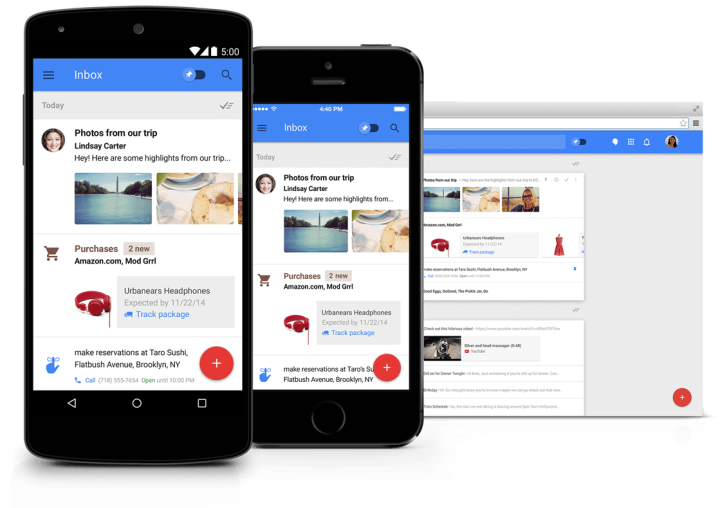
The smart service has proven wildly popular on mobile, Google says, with 10 percent of all replies from smartphones already making use of the feature. As such, the tech giant says, “We’re excited to bring this same convenience to the Web. It’s particularly helpful when you’re jamming through lots of emails on your laptop.”
It should be noted that Smart Reply is not yet available on the main Gmail page, but rather on the desktop version of Inbox by Gmail (which is not, in fact, the same thing). Inbox differs from its more traditional partner by automatically sorting through your mail for you — so in a way, it’s smart already. It’s also got a distinctly different look and feel from the original Gmail, which lends itself to the Smart Reply aesthetic and functionality.
Of course, if you’re not particularly keen on changing the whole layout of your inbox just to get Google to start a few responses on your behalf, you may want to wait a while longer (and hope that Smart Reply ultimately makes its way to the Gmail proper). It’s unclear as to just how long you’d be holding out, though — the Silicon Valley firm has given no indication as to if or when the feature will be further extended.
But if you’re willing to shake things up a bit, go for Inbox, and then go for Smart Reply. You’d be surprised how well Google knows you.
Editors' Recommendations
- The stylish Google smart lamp that you’ll (probably) never own
- Windows 11 is blocking an app that lets you switch browsers to Google Chrome
- Not a fan of Bixby? Samsung’s Family Hub smart fridge lets you chat with Alexa
- You can now ask Google Assistant to tie your shoes with expanded app actions
- Twitter iOS app update lets you choose who can reply to your tweets


